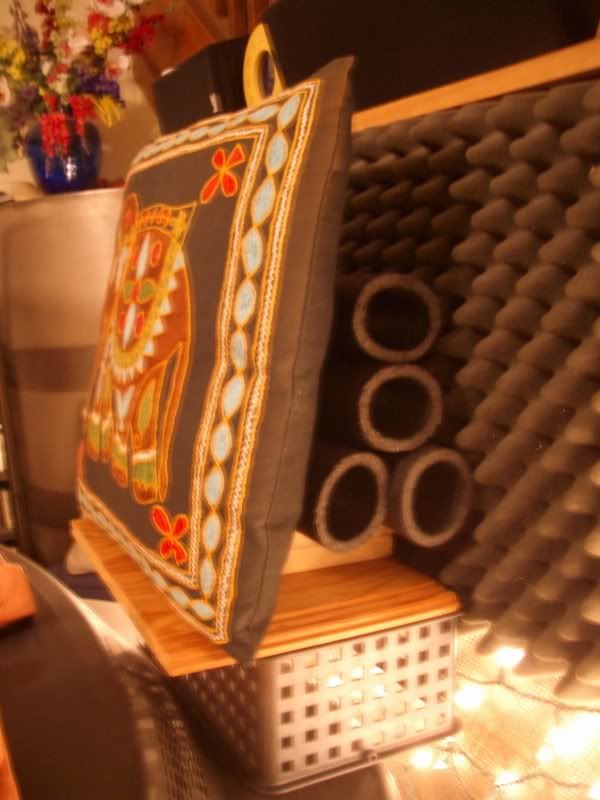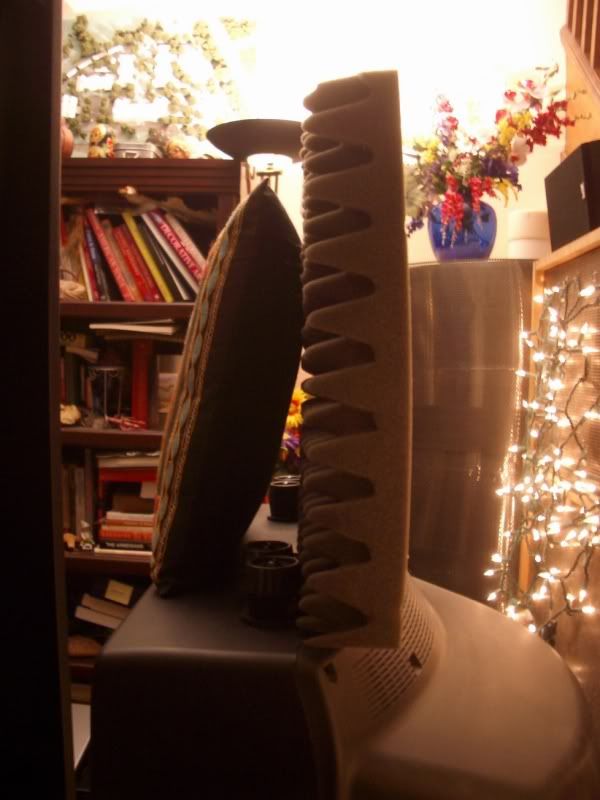If you don't want to mess with the angle of the speaker, I have found that putting something absorptive dead center on the wall between the speakers (the front wall you look at) helps flesh out the center stage and project it forward a bit.
I have also found that moving the absorptive panel off the front wall toward you moves the center image towards you.
I conducted a recent test of the impact of a large HDTV placed between the speakers, and (not really that surprising) found out the impact is
minimal (at least in my setup).
I have a 55" LCD TV on a cantilever mount, which allows me to push it in (almost) flush with the wall, or pull it out 2+ ft, as well as rotate it (up to 45 degrees) to one side or the other. I recently hosted a local audio society listening session, and we spent a few mins (blinded listeners) asking them to judge the impact of the TV's location on the soundstage. Fact is, it made little difference, and the listeners could
not even tell when the TV was turned the full 45 degree angle to one side or the other (which theoretically should have greatly shifted the image). I have conducted similar (non-blinded) tests (and measurements using XTZ) on my own, and reached a similar conclusion.
The
reason that such a large reflective surface between these speakers has minimal impact, is simply due to the dipole nature of electrostatic panels. The front and back "figure 8" radiation pattern of ESL's means there is minimal lateral dispersion, so a large centrally placed reflective object (TV or cabinet) does not cause as much reflection or interference as one might expect. That's not to say it doesn't have
any impact, as it clearly
does, and I strongly agree that no large object between the speakers would be ideal. However, for those of us with room/WAF limitations, there are
other more important acoustic variables (speaker distance in front of wall, rake angle, absorptive vs. diffusor treatment behind speakers, bass trapping, etc.) that actually play a bigger role in soundstage/imaging.
I sometimes cover my HDTV with absorptive acoustic material, but likewise found (and measured) that all it does is
slightly attenuate the midrange/high SPL's (1-2 dB per XTZ), slightly rolling off the highs (much like tubes). It sounded better at first, but after a while, I missed that "live" presence. Conversely, I found that placing absorption panels
behind my HDTV actually had greater impact! That too, makes sense, as what (little) laterally dispersed soundwaves head back towards the TV, are more likely to "bounce" between the wall and rear of the TV (if there significant space between the two), thus causing a slight "echo" effect which "smears" the image. Unfortunately, I can't measure that effect with the XTZ analyzer. I ended up cutting out some panels to fit around the cantilever mount, and hung them on the wall behind the TV.
Bottom line, IMHO, is don't fret
too much about having a large TV between your speakers. It's still possible to have a precise and deep soundstage if you pay attention to the other details.





